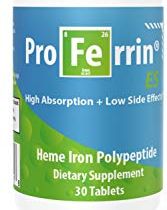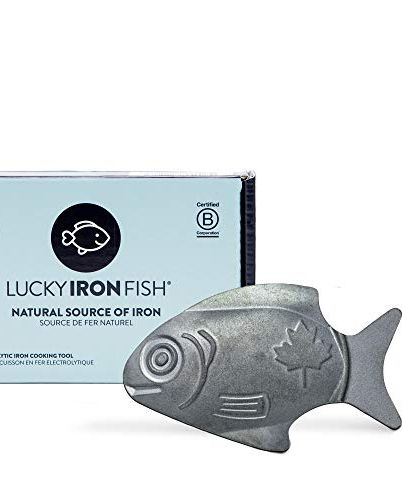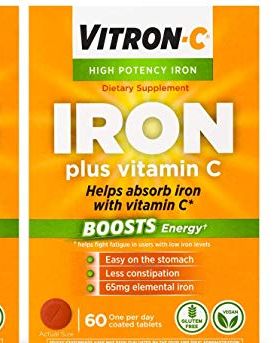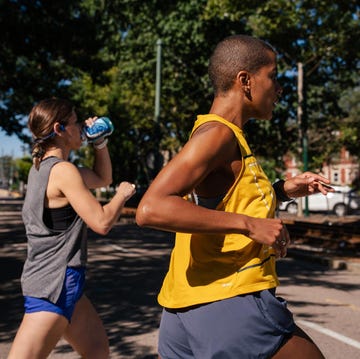You were looking forward to your run, but after just a few minutes, your legs feel heavy and you feel tired—tired enough not to continue the run. You probably wonder what’s wrong and go through a few possible reasons: Did you get enough sleep? Yes. Did you drink enough water? Yes. You might not consider, though, one of the most common reasons for fatigue: low ferritin levels and iron deficiency.
While there are numerous variables that can contribute to fatigue, iron is as important to runners as water. If your iron levels are low and you don’t do anything about it, you will eventually feel the negative impact on your performance.
To avoid those performance downfalls, here’s what to know about ferritin levels, iron, and how the two relate.
What is ferritin and why do ferritin levels matter?
Ferritin is an important blood marker that indicates iron storage. There is a wide range for what is considered to be a “normal ferritin level,” ranging from 12 to 300 nanograms per milliliter (ng/mL). When the body has enough iron, ferritin takes the excess and stores it for future use.
Blood tests measure the amount of ferritin levels in order to be sure there will be a supply when the body needs it. If there isn’t enough ferritin, it can be a sign of inflammation or other health problems, according to a paper published in Metabolites in July 2022.
“Linking ferritin levels (e.g. levels greater than 35ng/ml) directly to performance is very challenging, as there are so many things that impact performance,” Trent Stellingwerff, Ph.D., senior advisor for the Canadian Sport Institute Pacific tells Runner’s World.
However, ferritin levels do give you insights into your iron, which is important for athletes and their performance.
What is iron and why is it important for athletes?
Iron is an essential mineral found in red blood cells that is important for oxygen transport in the blood and to muscles, as well as for energy production, cognition, and immunity. Many of us lose iron in urine, through the menstrual cycle, in the gastrointestinal (GI) tract, through sweat, and through the breakdown of red blood cells via the impact of our foot strikes. Plus, frequent use of nonsteroidal anti-inflammatory drugs, such as ibuprofen and naproxen, and antacids can also lead to iron deficiency.
Iron levels are especially important for female athletes: According to a paper published in 2019 in the European Journal of Applied Physiology, the prevalence of iron deficiency is around 15 to 35 percent in female athletes and 3 to 11 percent in males. Females, endurance runners, vegans, vegetarians, and athletes with low-energy availability are at an increased risk for iron deficiency.
What are symptoms of iron deficiency?
The classic signs of iron deficiency, with or without anemia, include lethargy, fatigue, negative mood state, and difficulty concentrating. However, runners may notice symptoms that mimic overtraining, reduced work capacity during training, impaired responses to training, and ultimately poor performance. The only way to determine if low iron is the culprit is to have a blood test.
Does an iron deficiency mean you have anemia?
Anemia is a condition in which the blood doesn’t have enough healthy red blood cells. Although iron-deficiency anemia is the most common type of anemia, it is one of many different types. It is possible to have iron deficiency prior to developing a diagnosis of iron-deficiency anemia. Over time, iron deficiency will lead to anemia because the body will exhaust its iron stores.
How can ferritin levels inform iron deficiency?
The body uses relatively small amounts of minerals and those minerals need to be within a somewhat narrow range for optimization. In fact, while low levels of iron and ferritin can make a runner drag, high iron levels can be toxic for their liver and heart. “We aim for ferritin greater than 35ng/ml and clinically normal hemoglobin, but appreciate individual athlete norms as well,” says Stellingwerff.
Thus, routine assessments of iron deficiency should include the following blood markers: ferritin, hemoglobin, and transferrin saturation. Iron deficiency occurs in three stages using the following ferritin levels for athletes:
- Stage 1 - Iron deficiency/depletion: ferritin less than 35 ng/mL, hemoglobin and transferrin levels will still be normal. There is little evidence to suggest you will notice any fatigue at this point, but it’s important to correct and prevent iron-deficiency anemia.
- Stage 2 - Iron-deficient non-anemia: ferritin less than 20ng/mL, low transferrin, and normal hemoglobin. You may start to feel some of the iron deficiency symptoms mentioned above and performance may be negatively impacted.
- Stage 3 - Iron-deficiency anemia: ferritin less than 12 ng/mL, low transferrin and hemoglobin. You will notice key symptoms mentioned above, including impaired endurance performance.
How often should you have iron and ferritin levels checked?
As suggested in European Journal of Applied Physiology, high-risk runners should be screened regularly. Although not comprehensive, here are some guidelines:
- Annually: Runners with no history of iron deficiency; no fatigue after an extended rest period
- Biannually: Previous history or low ferritin (iron depletion stage 1); female; intention to increase training volume or training at altitude within the next 12 months
- Quarterly: Any recent history of iron depletion/deficiency, vegetarian/vegan; individuals with any evidence of low energy availability; high training volume; and fatigue/lethargy, plans to train at altitude within the next 6 months
Ferritin, an acute phase reactant protein, can be falsely elevated with inflammation after intense exercise. Thus, it’s important to avoid any muscle-damaging or intense exercise about two to three days prior to your routine blood test. Other suggestions for standardization include testing first thing in the morning and in a well-hydrated state.
Work with your doctor to determine the best course of action and figure out if supplementation is right for you.
Should runners traveling to altitude be concerned about iron or ferritin levels?
Training at low to moderate altitudes provides an environmental stimulus to increase red blood cells with the goal of improving performance at sea level. With this increase in red blood cell production, comes an additional need for iron. A review paper by Stellingwerff et al. (2019) suggests checking iron status prior to altitude training to ensure that levels are in the optimal range prior to leaving.
“However, if a runner is just going to altitude for a race or short period of time, the impact of iron is much less,” Stellingwerff says. “Although, all endurance athletes should aim to have ferritin levels well into the healthy and normal range.”
How can runners optimize iron absorption?
You can have a solid iron-rich fueling plan, but is your nutrient-timing and combination of foods on point? Iron absorption may be impaired post-exercise due to increased levels of hepcidin, a hormone released by the liver that regulates the ability to absorb or recycle iron. In other words, increased hepcidin levels will inhibit iron absorption.
Inflammation is believed to be a strong up regulator of hepcidin. According to an article published in Sports Medicine in 2020, hepcidin increases around three to six hours post-exercise and increases toward the end of the day.
Thus, the optimal timing for iron absorption is within 30 minutes after a morning workout when hepcidin levels are low. Runners can optimize iron absorption with the following strategies:
- Avoid dairy, coffee, and tea (which decrease absorption of iron) for an hour before or after a meal.
- Cook with a cast-iron skillet or a product like a Lucky Iron Fish, which may be a cost-effective strategy for increasing the iron in conjunction with other methods according to one study.
- Consume “heme iron” rich foods such as beef, eggs, tuna, lamb, and clams.
- Improve absorption of “non-heme iron” sources (almonds, figs, apricots, kidney beans, green leafy vegetables, tofu, dark chocolate) by pairing them with heme-rich sources, as well as foods high in vitamin C, such as pineapple, strawberries, broccoli, or red peppers.
- If taking a physician-prescribed iron supplement, take with vitamin C-rich food. Emerging evidence suggests alternate day dosing to be just as effective as daily for raising ferritin levels and better tolerated for runners with a sensitivity to iron supplements.
The bottom line on ferritin levels
Not every bad race or tired day indicates low iron, but it is a good idea to get checked, especially before racing or if that fatigue lasts longer than a couple days. There is also no evidence that higher ferritin levels are better, and supplementation is not likely to improve performance in non-depleted runners. Iron supplementation should only occur under physician supervision.

Kelly Pritchett is an Associate Professor in Nutrition and Exercise Science at Central Washington University. As a board-certified specialist in sports dietetics, she has consulted with both elite and collegiate athletes as well as with active individuals. While in college, she competed on the swimming and diving team at the University of Alabama. Pritchett serves on the leadership committee of the Academy's Sports, Cardiovascular and Wellness Nutrition dietetic practice group as the Education Coordinator, and served as a National Media Spokesperson for the Academy of Nutrition and Dietetics. Pritchett is an active member of the American College of Sports Medicine. She has authored research articles for scientific journals and presented at regional and national conferences. Her current research interests include post exercise nutrition for recovery, vitamin D and the athlete, and energy availability in spinal cord injured athletes. In her spare time, she enjoys running and spending time with her three active boys."

















